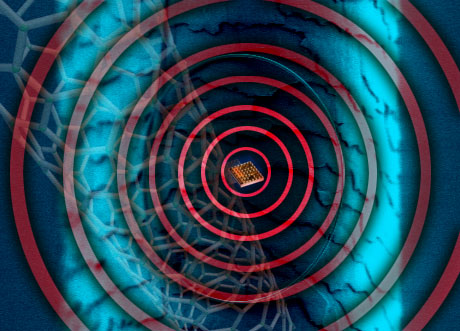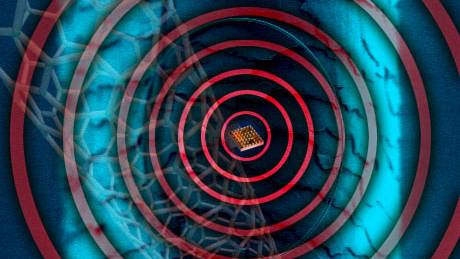Berkeley Physicists Make a Radio 10,000 Times Thinner Than a Human Hair
Source: sfgate.com

Image not correctly scaled
Professor Alex Zettl led a team that developed the minuscule filament, which can be tuned to receive AM or FM transmissions.
The first song it played? "Layla" by Derek & the Dominos. Eric Clapton's unmistakable guitar riff can be heard on a scratchy recording of the nanoradio's output posted by Zettl online.
<< Listen to the 'Layla' recording Courtesy Zettl Research Group, Lawrence Berkeley National Laboratory and University of California at Berkeley >>
Zettl said the device, built by graduate student Kenneth Jensen, is the first radio within the size range of nanotechnology, which covers inventions no larger than 100 billionths of a meter. The nanoradio is 100 billion times smaller than the first commercial radios of the early 20th century. It is a thousand times smaller than the most minute radios in use today, which are based on silicon chip technology.
The research team has no commercial partners yet, but Zettl said the practical applications of the nanoradio could include cell phones, climate-monitoring systems and radio-controlled diagnostic probes that could move through the human bloodstream.
"Maybe the kids will be wearing these instead of iPods, inside their ears," Zettl said.
As long as 10 years ago, scientists had managed to build individual components of a radio on the nanoscale, he said. But Zettl and his colleagues figured out how to make a single nanotube perform all the functions of a radio: It serves as an antenna, tuner, amplifier and demodulator. The demodulator eliminates any frequencies from a radio transmission except the signal to be played, such as a song.
"I hate to sound like I'm selling a Ginsu knife - 'But wait, there's more! It also slices and dices!' - but this one nanotube does everything," Zettl said.
The key to this feat was making the nanoradio work differently from conventional radio electronics. The first step in that old technology is to convert radio waves into pulses of electronic current. By contrast, the nanotube absorbs the radio transmission and physically vibrates in response, like a tuning fork or the tiny hairlike structures inside the human ear. The filament has one end mounted in an electrode, but the other end is free. Its vibrations change the patterns in an electric field created by a battery. The varying electronic patterns become sounds or music audible through headphones.
Jensen's choice for one of the first songs played on the nanoradio was "Good Vibrations" by the Beach Boys.
But there is indeed more. The nanotube can also function as a transmitter. Theoretically, thousands of nanoradios distributed through the air or in the bloodstream could send back signals about air quality or the state of a patient's cells, Zettl said.
Carbon nanotubes are immensely strong compounds made of carbon atoms linked in a structure that looks like chicken wire. The carbon sheets can be formed into hollow tubes. Zettl's research team tweaked the nanotube structures and found that multi-walled cylinders - tubes within tubes - were better for picking up AM and FM transmissions. Single-walled nanotubes were best for receiving the frequencies used in cell phones.
The team built a transmitter in the lab based on conventional electronics, and first proved that the nanoradio could pick up and play "Layla" about 10 months ago. But the scientists held the news for publication in the journal Nano Letters, which posted it online on Wednesday. Along with Jensen and Zettl, the co-authors of the paper were UC Berkeley postdoctoral fellow Jeff Weldon and physics graduate student Henry Garcia. The project was funded by the National Science Foundation and the Department of Energy.
Hear a recording of the first song ever played on a nanotube radio at sfgate.com/ZBKF.
Article from: http://www.sfgate.com/cgi-bin/article.cgi?
file=/c/a/2007/11/01/BUTBT44A2.DTL&type=business






















